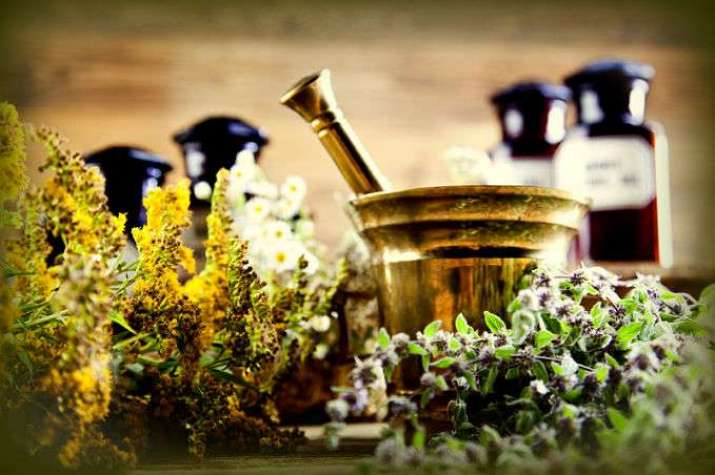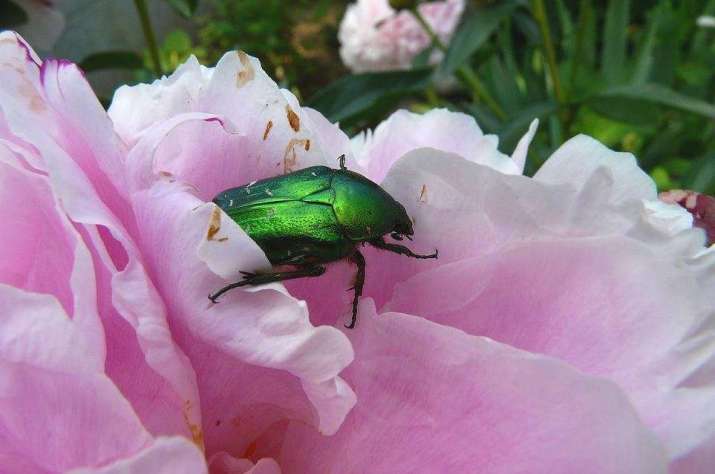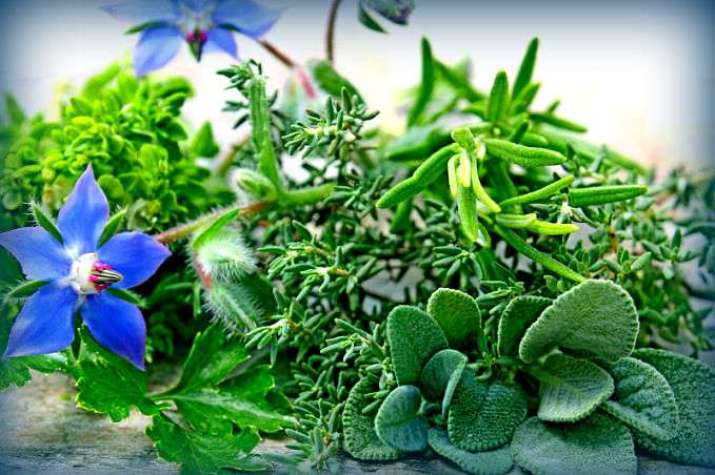FEATURES|COLUMNS|Creativity and Contemplation
Healing Body and Mind: Reconnecting with the Wisdom of Medicinal Plants
 From onlynaturalhomehealth.com
From onlynaturalhomehealth.comEarly human beings, living in the bosom of nature, were clairvoyant. Legends tell of a time when mankind talked to the gods and when animals could speak. It was then, also, that some of the plants received ancient names, which indicate their hidden nature. (Storl 2012, 6)
Chinese herbs, Tibetan medicine, Ayurveda, Western herbs, and essential oil formulation: these are modes of deep healing available at our fingertips for both body and mind. I’m rarely sick, but this winter I am enduring my third infection: sinus, throat, respiratory. I have also experienced a lot of emotional upheaval. Although I have no formal training in botany, I always turn first to herbal medicine for myself and others for healing of body, mind, and energy. I love herbal medicine and have a fond rapport with plants. My grandmother was a prizewinning horticulturalist and hybridizer in San Antonio, Texas. She had a magical greenhouse full of orchids, bromeliads, cacti, and succulents, as well as many other delights, which I explored as a young child. She cultivated about two acres of lily beds, and there is a hybridized lily named for me, and one for my sister.
 Peony with Beetle, 2011 © Lilo Lieselotte. From flickr.com
Peony with Beetle, 2011 © Lilo Lieselotte. From flickr.comMy parents raised us in Massachusetts with an extensive garden that included vegetables, flowers, and herbs, so I learned by immersion; not just species and cultivation but by the secret life of plants. The smell of crushed tomato leaf, brilliant Japanese beetles and miniature ants in the peonies, the way a crocus bud pops its hopeful head through the snow sometime in March.
I have a little knowledge of Chinese and Ayurvedic herbs, and I have done extensive self-study of Western herbs, albeit usually focused around ailments experienced by myself, or friends and family. I have learned how to make tinctures, and now want to learn about making glycerites, salves, infusions, elixirs, hydrosols, and more. I was accepted into the prestigious California School for Herbal Studies in their apprenticeship program, but life led me in other directions and I didn’t attend (yet!). Besides the Soothing Moon synergistic tincture I have been making for more than 13 years for treating PMS symptoms, I also made Breathe Easy for a time, with Usnea I harvested, Echinacea, and uva-ursi for respiratory health. I also play with essential oil combinations for depression, anxiety, skin products, deodorants, dental care, and just plain fun. Essential oils can be helpful for meditation, to change mood, elevate sleepiness, or soothe agitation.
Plants have a wide range of properties and uses for human purposes. Seeming weeds may be medicines in disguise. Of course, one must know how to safely extract and apply the useful qualities. As Wolf Storl puts it: “Poisonous plants, good plants, nasty weeds, or food plants; these are relative categories, more indicative of what goes on in our head than of what goes on in nature. Judged from the standpoint of what they can do to human beings . . . all plants are useful, and all plants are poisonous.” (Storl 2012, 171)
Since I took a Chinese nutrition course in Santa Fe, New Mexico, I have also felt passionate about food as medicine. When I was misdiagnosed with hypoglycemia (I had amoebic dysentery) for 10 months, erroneous treatment almost killed me. I sought to trust my instincts and intuition more deeply, and to rely on plant medicine rather than (solely) on chemical drugs and one-dimensional modern Western medicine. I read Patient, Heal Thyself by Jordan Rubin and learned about broad probiotics, homeostatic soil organisms from primeval forests, and enzymes. I had long ago learned to use amino acids to control various ailments. Culinary herbs can also frequently be made into teas and tinctures for healing purposes.
 From onlynaturalhomehealth.com
From onlynaturalhomehealth.comI grew up hiking in the White Mountains of Maine and New Hampshire, and I spent a long retreat in the mountains of Santa Cruz, California. The wild outdoors has always felt like home. I feel a strong emotional connection with alpine plants and animals, and I am most at home in rural living. I am passionate about forests, rivers, the ocean, animals, and ecology. One of my favorite books is Prodigal Summer by Barbara Kingsolver because it is such a gorgeous portrayal of the interdependence of animals, insects, plants, and humans, embraced by this one wild world. As a Waldorf teacher trainee in Fair Oaks, California, I spent several seasons in their biodynamic garden, watching the runner ducks, flow forms, and the herbs and wildflowers intermingle. As an art teacher I have been fortunate to take students outdoors as much as possible to create human art in the natural world. In retreat I grew my own vegetables and herbs.
Now living in the city, I yearn for the forest, and notice that I fall ill more often, in more ways than one. Thankfully I have herbal reference books and an incredible Western herbal apothecary nearby. I am grateful to the plant world for its many gifts of healing magic and wisdom. I hope many people will take advantage of the inherent natural healing properties of medicinal plants for their well-being.
Sarah C. Beasley (Sera Kunzang Lhamo), a Nyingma practitioner since 2000, is an experienced teacher, writer, editor, and artist. She has a degree in Studio Art and a Graduate Certificate in Education. Sarah spent close to seven years in retreat under the guidance of Lama Tharchin Rinpoche and Thinley Norbu Rinpoche. She offers a workshop, Meditations for Death, Dying & Living, which includes an Expressive Arts component. With a lifelong passion for wilderness, she has summited Mt. Kenya and Mt. Baker, among other peaks. Her work can be seen at Moondrop Meditation.
References
Storl, Wolf D. 2012. The Herbal Lore of Wise Women and Wortcunners. Berkeley, California: North Atlantic Books.
Related features from Buddhistdoor Global
The Union of Buddhist Thought and Human Health
Mindfulness Practice in Japanese Stroll Gardens
Everyone with a Cow Owes Me a Favor – Dancing, Healing, and Spiritual Realization, Part One
A Humanitarian Action for Other Living Beings: Creating Space for Urban Biodiversity through Buddhist Gardening















